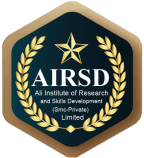About the Journal
The organization of the IJLAI Transactions on Science and Engineering:
The International Joint Laboratory for Artificial Intelligence (IJLAI) laboratory makes full use of existing resources combined with computer vision, image processing and other technologies to carry out intelligent information processing, in order to realize the full mining of big data, and strive to develop into an important basic research base in the field of intelligent information processing. The research work of the laboratory focuses on the national needs and the forefront of international scientific and technological development, while considering the need to serve the national economic construction. The orientation of the laboratory is to explore the mechanism, theory, method and technology of artificial intelligence and pattern recognition, carry out basic research and related application basic research, propose new concepts and models, solve core technical problems, and build corresponding systems.
The goal of the laboratory is to reach the domestic first-class level in the field of basic theoretical research of intelligent information processing, and strive to reach the world advanced level, cultivate forward-looking thinking, produce first-class results, and train basic talents, so as to provide basic principles, core technologies and key application prototypes for intelligent technology to form intelligent industry, and provide technical support for "artificial intelligence" to "artificial intelligence +". Reserve knowledge, innovative technology and talents for the long-term development of national information technology.
1. To improve the academic position and reputation of International university alliance and encourage an academic research atmosphere, we establish the IJLAI Transactions on Science and Engineering to offer the published corner for fine papers.
2. Organizational structure : The publisher appoints several editor-in-chiefs who oversees the journal editorial matters. The editor-in-chief set up several teams, mathematical editing team, chemical editing team, civil editing team, mechanical editing team, electrical editing team, and executive editor group. The executive editor group has an executive editor and an administrative assistant and each editing team have three editors or more, which two are convener and at least one of the editor should be the outside scholars.
The editor-in-chief should possess the qualifications of a professor position. The term of office is two years and can be eligible for re-election once. The editor should possess the qualifications of an associate professor position. The term of office is two years and can be eligible for re-election.
3. Council Editorial committee meetings, editorial board meetings, and editing team meetings were organized according to regulations.
4. All the related business will be handle in accordance with the methods and procedure of published papers.
5. The approach adopted by the editorial committee and report after the president approved.
COPE Rules
The journal adheres strictly to the COPE guidelines, as detailed in:
https://publicationethics.org/






